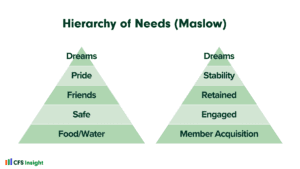Every Credit Union makes a considerable investment in trying to understand the risk of a loan before origination. However, the risk of a loan is not static. Measuring the change in risk can be very challenging. Some Credit Unions will address this by collecting period credit scores and checking to see if there was a change. This option has several limitations in that it’s expensive, slow, and is not loan specific in scoring the risk.
The CFS Risk model looks at the payment behavior of every collateralized loan to assess the risk for that specific loan. This results in the following advantages:
- The risk score is more timely / accurate as it based upon the borrower’s most recent loan payment.
- Since the risk is based on their payment behavior on each loan vs. a credit score that could be as much as six months behind in reporting.
- The model is sensitive to both the timing and amount of payments and is influenced by differences between the expected and the actual payment.
Because of the unique way that the risk is assessed the value can be used very effectively in predicting which loans are more likely to charge off. This allows the Credit Union to improve the reserve value for the loan portfolio in addition to adjusting tactics in collections for those loans at the highest risk level.








